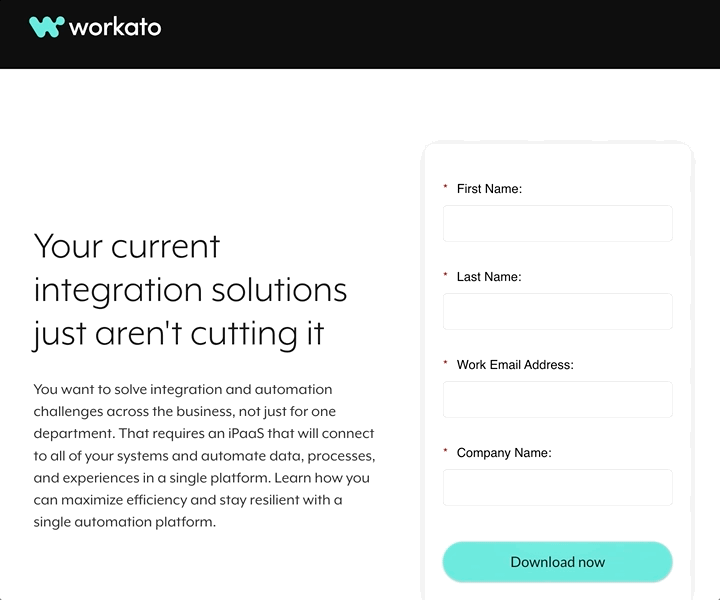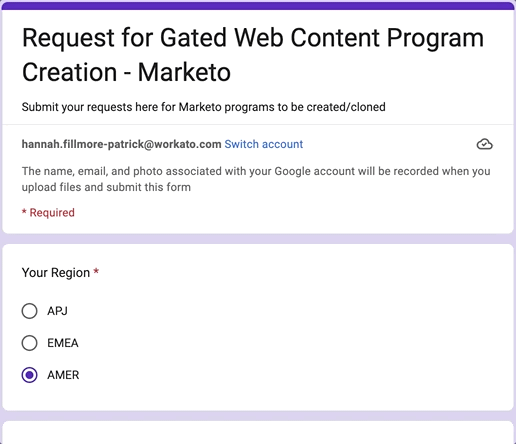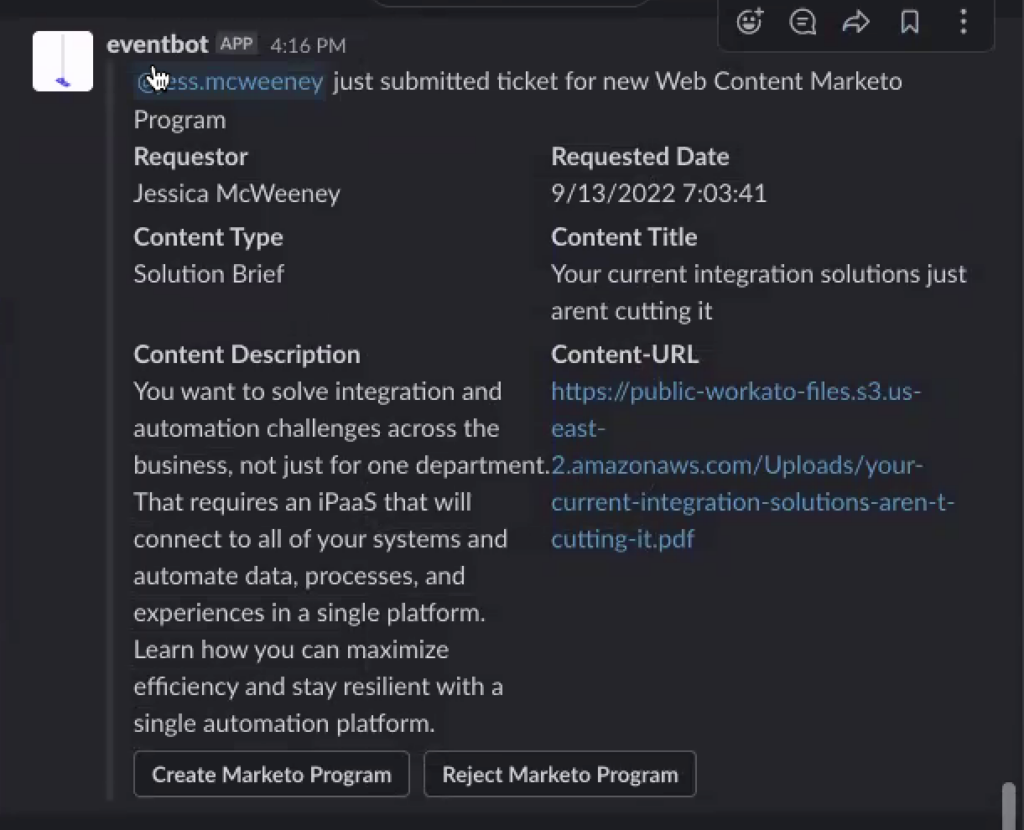Here at Workato, we only have a few MOps professionals that support the needs of the entire company.
Our ability to keep the MOPs function small—yet mighty—largely comes down to the team using Workato to automate countless processes. Cole Brady, a Marketing Operations Analyst here, explains that “Without Workato, my job would be impossible. I use Workato in everything I do—from syncing event registrations across platforms to reporting on campaign performance in Salesforce.”
It’s little wonder then that when the content team asked Cole to help them launch marketing web pages faster, he turned to a solution that leverages Workato.
You can read on to learn why our team made this request, what Cole ended up building in Workato, and how the automation has ultimately benefited our marketing team.
Addressing a time and resource-intensive process
Every week, stakeholders on the marketing team spent hours publishing content in Marketo, which ate into time that could be better spent strategizing, creating, and executing on various initiatives.
To launch content to the public, marketers needed to set up a Marketo download page, a thank you page, an email, and a Salesforce report for the resource. Moreover, new content sometimes passed between the content team, design team, MOps, and web team for more than a week before it was finally available on our website. All of this took hours to carry out, which often caused delays in campaign launches. In addition, as tasks passed between stakeholders, information would often slip through the cracks—leading to all kinds of issues down the line.
MOps had a few options for addressing this manually-cumbersome process: add headcount; purchase a dedicated SaaS tool; or use Workato.
“We evaluated a software solution that we really liked, but we didn’t have the budget for it,” says Michael Fan, Sr. Manager, Marketing Operations at Workato. “That ultimately led us to try and build the solution with Workato.”
How we built the automation
To make it easier for the marketing team to launch web content campaigns, Cole built an automated publishing tool (with Workato) to automate a process that reaches across Google Forms, Slack, Marketo, Salesforce, and Google Sheets.
He wanted to accomplish several objectives with this automation, such as:
- Creating a central place, in Google Forms, for stakeholders to make requests
- Baking in a Slack approval step for quality control
- Completely automating the publication process across Marketo and Salesforce
- Giving stakeholders visibility into published web content in Google Sheets
Even though Cole had only recently transitioned into a MOps role, it only took him a few weeks to audit the process and replicate it in Workato. Here’s what the process looks like now:
- To kick off the automation, a marketing stakeholder fills out a Google Form with all the information the automation needs—like a name and description of the new content.
- When the stakeholder hits submit, the first Workato automation gets triggered.
- The data fields from the form are populated in an app called “eventbot” in Slack.
- A notification pops up in Cole’s eventbot almost immediately. It prompts him to either create a Marketo program or reject the request.
When Cole hits “Create Marketo Program,” a separate automation gets triggered.
A Marketo program that includes a landing page, a thank you page, and an email is cloned and then populated with the information that the marketing stakeholder provided in the Google Form. And since Workato has a global reach, the automation is also able to separate the content by region (ensuring that the program is created and filed in the proper folder in Marketo).

A native Marketo automation then syncs the new program to Salesforce (where we track critical metrics, like the amount of sourced and influenced pipeline and revenue that can be attributed to the campaign).
This sync triggers an automation in Workato where new content gets added to a specific Google Sheet. More specifically, key information on the content, such as its launch date, title, thank you page, gated landing page, and corresponding Salesforce campaign and Marketo program get populated in separate columns.

A cost-effective, streamlined process for publishing content
In the 6 months since Cole built this relatively simple series of automations, it’s saved our marketing team countless hours of work and helped us avoid spending tens of thousands of dollars on either headcount or software.
More specifically, it used to take the marketing department 2 hours and 25 minutes, on average, to publish web content. Many stakeholders also needed to be responsive and available to take manual action, so campaigns were often delayed. Now, a single marketing stakeholder can kick off the process in 10 minutes and, after a quick approval from Cole, the content is ready to be shared.

Ready to implement your own marketing automations?
Learn how Workato, the leader in enterprise automation, can transform your marketing processes.


